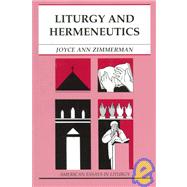
| Introduction | p. 5 |
| What's at Stake? | p. 11 |
| Who Interprets Liturgy? | p. 11 |
| What Is Interpreted? | p. 14 |
| How Are Texts Interpreted? | p. 20 |
| Response to the Question | p. 21 |
| Overview of Hermeneutical Theory and Issues | p. 23 |
| Overview of the Development of Hermeneutics | p. 24 |
| Hermeneutical Issues and Their Import for Liturgical Studies | p. 39 |
| Conclusion | p. 46 |
| Critical Methods | p. 47 |
| Diachronic, Historical Critical Methods | p. 50 |
| Synchronic, Literary Critical Methods | p. 56 |
| Gains and Limits of the Critical Methods | p. 58 |
| Post-critical Methods | p. 61 |
| Linguistic Turn | p. 62 |
| Structuralism and Semiotics | p. 64 |
| Beyond Structuralism | p. 70 |
| Review | p. 79 |
| Hermeneutics and Liturgical Studies Today | p. 83 |
| A New Direction for Liturgical Studies | p. 85 |
| Post-critical Methods and Liturgical Studies | p. 96 |
| Language Issues and Philosophical Framework | p. 99 |
| Epilogue | p. 103 |
| Index | p. 105 |
| Table of Contents provided by Syndetics. All Rights Reserved. |
The New copy of this book will include any supplemental materials advertised. Please check the title of the book to determine if it should include any access cards, study guides, lab manuals, CDs, etc.
The Used, Rental and eBook copies of this book are not guaranteed to include any supplemental materials. Typically, only the book itself is included. This is true even if the title states it includes any access cards, study guides, lab manuals, CDs, etc.